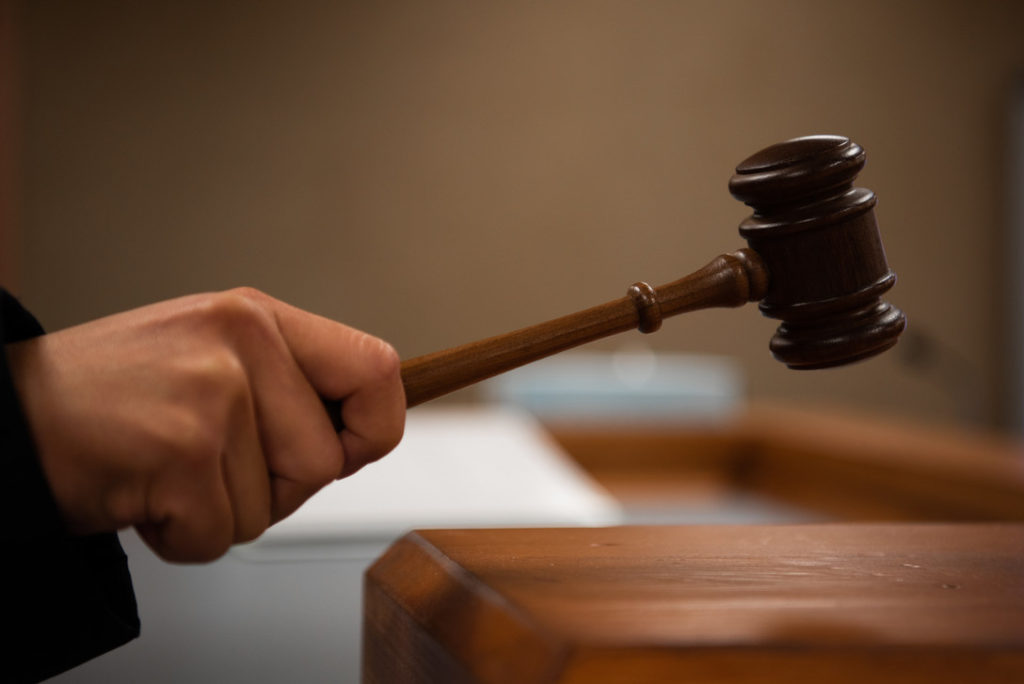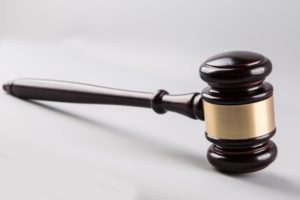By Agustin Martinez and Ashley Oldfield
Born in 1954 in Tyler, Texas,[1] former Judge J. Michael Luttig attended Washington and Lee University for his undergraduate studies.[2] After graduating with a Bachelor of Arts degree in 1976,[3] Judge Luttig worked at the U.S. Supreme Court in the Office of the Administrative Assistant to the Chief Justice from 1976 to 1978.[4] Judge Luttig then attended the University of Virginia School of Law, earning his law degree in 1981.[5]
Following law school, Judge Luttig worked in the White House during the Reagan presidency, first as special assistant to the White House Counsel and then as assistant counsel from 1981 to 1982.[6] After leaving the White House, Judge Luttig worked as a judicial law clerk for then-Judge Antonin Scalia of the U.S. Court of Appeals for the D.C. Circuit from 1982 to 1983, and then for Chief Justice Warren E. Burger of the U.S. Supreme Court from 1983 to 1984.[7] Judge Luttig continued working for Chief Justice Burger from 1984 to 1985 as his special assistant.[8]
From 1985 to 1989, Judge Luttig worked in private practice for the New York law firm Davis Polk & Wardwell.[9] He then left private practice and worked for the U.S. Department of Justice for two years,[10] serving as assistant attorney general and counselor to the attorney general.[11] During his time at the Department of Justice, Judge Luttig helped prepare Justices David Souter and Clarence Thomas for their U.S. Supreme Court nomination hearings before the Senate.[12]
In 1991, President George H.W. Bush nominated Judge Luttig to a new seat on the U.S. Court of Appeals for the Fourth Circuit.[13] The Senate confirmed him that same year.[14] At the time of his appointment to the Fourth Circuit, Judge Luttig was the youngest federal court of appeals judge in the country.[15]
Judge Luttig wrote opinions in a wide variety of areas, ranging from criminal justice to civil rights to economic and labor regulation.[16] One of his more notable opinions, which was upheld by the Supreme Court, found a section of the federal Violence Against Women Act unconstitutional,[17] holding that the necessary “nexus between violence motivated by gender animus and interstate commerce” was lacking.[18] Judge Luttig was also among the first federal appeals judges to assert that the Constitution affords inmates the right to post-conviction DNA testing.[19]
Many of Judge Luttig’s clerks went on to become clerks for justices on the Supreme Court.[20] Additionally, in 2005, Judge Luttig was considered a potential contender for a position on the Court.[21] However, John G. Roberts, Jr., was nominated for the position instead and was later confirmed as the Chief Justice of the Supreme Court.[22]
Following fifteen years on the bench, Judge Luttig resigned from the Court of Appeals in May of 2006.[23] Since then he has served as general counsel and executive vice president of The Boeing Company.[24]
-
Luttig, J. Michael, Fed. Judicial Ctr., https://www.fjc.gov/history/judges/luttig-j-michael (last visited Apr. 2, 2019). ↑
-
Id. ↑
-
Id. ↑
-
Executive Biography of J. Michael Luttig, Boeing, https://www.boeing.com/company/bios/j-michael-luttig.page (last visited Apr. 2, 2019). ↑
-
Fed. Judicial Ctr., supra note 1. ↑
-
Executive Biography of J. Michael Luttig, supra note 4. ↑
-
Id. ↑
-
Id. ↑
-
Id. ↑
-
Fed. Judicial Ctr., supra note 1. ↑
-
Executive Biography of J. Michael Luttig, supra note 4. ↑
-
Id. ↑
-
Fed. Judicial Ctr., supra note 1. ↑
-
Id. ↑
-
Executive Biography of J. Michael Luttig, supra note 4. ↑
-
Charles Lane & Jerry Markon, Similar Appeal, Wash. Post (July 17, 2005), https://www.washingtonpost.com/archive/politics/2005/07/17/similar-appeal/db16a144-03f0-443f-a5d3-291bf2718f84/?utm_term=.2e13a908e7ff. ↑
-
Id. ↑
-
Brzonkala v. Va. Polytechnic Inst. & State Univ., 169 F.3d 820, 838 (1999). ↑
-
Harvey v. Horan, 285 F.3d 298, 308 (2002) (Luttig, J., concurring); Lane & Markon, supra note 16. ↑
-
David Lat, Another Judge Leaves for Greener Pastures, Above the Law (July 26, 2006, 10:36 AM), https://abovethelaw.com/2006/07/another-judge-leaves-for-greener-pastures/. ↑
-
Lane & Markon, supra note 16. ↑
-
John G. Roberts, Jr., Oyez, https://www.oyez.org/justices/john_g_roberts_jr (last visited Apr. 2, 2019). ↑
-
David Lat, Lawyerly Lairs: Luttig in Lap of Luxury, Above the Law (July 27, 2010, 1:37 PM), https://abovethelaw.com/2010/07/lawyerly-lairs-luttigs-lap-of-luxuryplus-info-about-his-current-compensation/. ↑
-
Id. ↑





